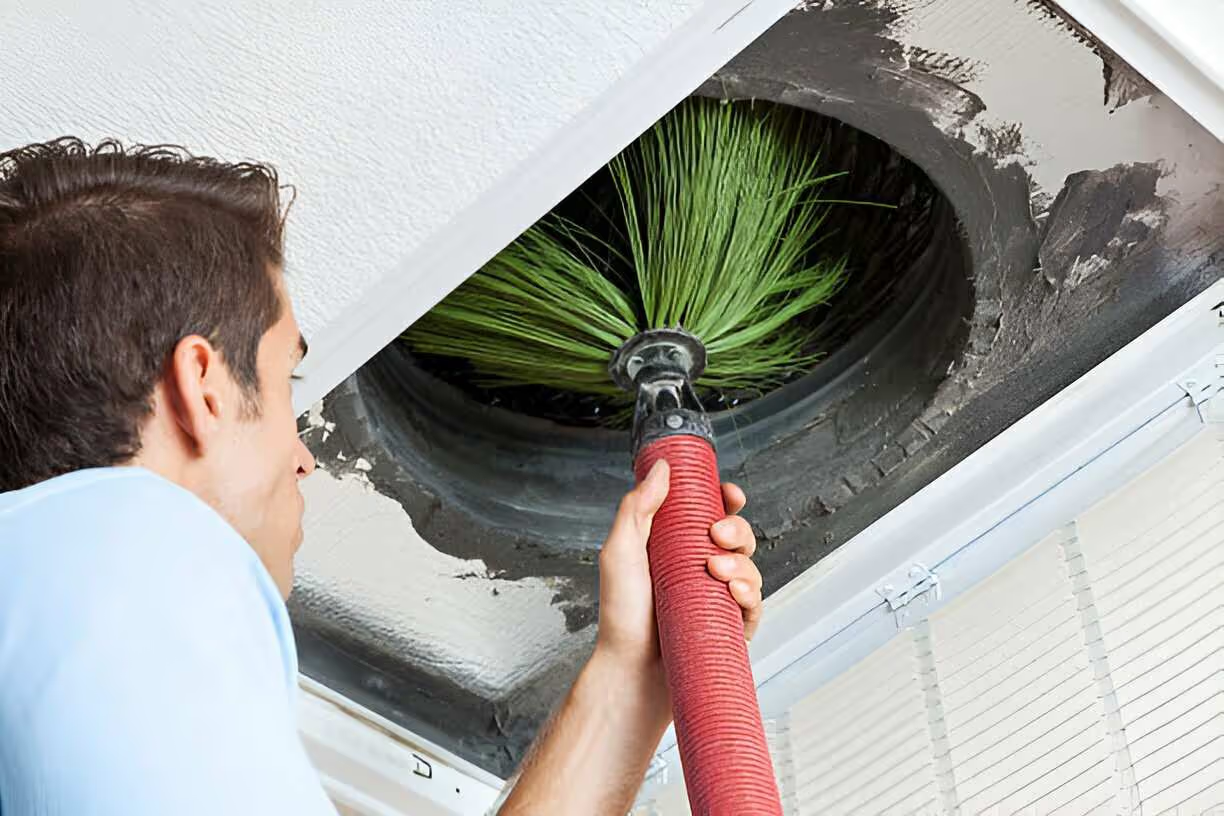Ductwork in Valrico, FL


Why ductwork matters in Valrico, FL
Valrico experiences high cooling loads and high humidity for much of the year. Attics can exceed 130 degrees on summer afternoons, and poor ductwork in those spaces results in:
- Significant energy loss as cooled air warms before reaching living spaces
- Condensation and mold growth where ducts are inadequately insulated or sealed
- Uneven cooling, with upstairs and sun-facing rooms running hot
- Increased wear on the HVAC system from longer run times and short cycling
Addressing ductwork issues improves system efficiency, reduces electric bills, increases comfort, and reduces indoor allergens and moisture-related problems.
New duct design and sizing
Proper duct design starts with accurate load and equipment sizing rather than simple rule-of-thumb duct runs. Key elements include:
- Load calculations: Using Manual J style principles to determine cooling needs for each room in your Valrico home considering local solar gains and humidity.
- Duct sizing and layout: Following velocity and friction loss guidelines to size trunks, branches, and register runs so each room receives appropriate cubic feet per minute (CFM).
- Return air planning: Ensuring adequate and properly located return paths to prevent negative pressure and room-to-room contamination.
- Static pressure considerations: Designing for a system static pressure that matches the air handler and reduces strain on the blower.
A correctly designed system addresses common Valrico challenges like long attic runs, vaulted ceilings, and multi-level homes.
Common ductwork problems in Valrico, FL
- Leaks and disconnected joints: Seams and connections that are unsealed or pulled apart by attic movement or pests.
- Poor airflow and undersized ducts: Insufficient CFM to rooms, causing hot spots and reduced comfort.
- Inadequate insulation: Ducts in hot attics without proper insulation leading to thermal loss and condensation.
- Mold and moisture damage: High humidity plus duct leaks or condensation can create mold growth on insulation or duct surfaces.
- Collapsed or crushed flexible ducts: Improper routing or foot traffic in attics compresses flexible ducting and restricts flow.
- Dirty or clogged ducts: Construction debris, dust build-up, or pest droppings reduce airflow and degrade indoor air quality.
Duct repairs, sealing, and insulation
- Sealing methods: Use of water-based mastic and approved UL 181-rated tapes on flexible connections for long-term sealing. Avoid relying solely on standard cloth-backed HVAC tape, which fails over time.
- Patching and replacement: Small holes and separated seams can be patched; severely damaged sections should be replaced with appropriate gauge sheet metal or properly sized flexible ducts.
- Insulation: For ducts running through unconditioned attic spaces in Valrico, use insulation rated for exterior attic exposure (R-values suitable for Florida climates, typically high-performance R-6 or greater on exposed ducts). Insulated flex duct with proper inner liners and outer vapor barriers reduces heat gain and condensation risk.
- Plenums and boots: Ensure supply and return plenums are sealed and insulated where necessary; register boots should be sealed to subfloor or drywall to prevent attic air infiltration.
Air balancing and testing
Air balancing verifies each room gets the intended airflow. Key steps:
- CFM measurements: Use flow hoods or anemometers at registers to quantify supply in each room.
- Damper adjustments and register balancing: Adjust manual dampers and register orientation to fine-tune distribution.
- Pressure testing: Duct leakage tests and whole-house pressure diagnostics reveal hidden leaks, often in attics or crawlspaces.
- Static pressure checks: Measuring static pressure ensures the system operates within equipment limits to avoid reduced efficiency and blower strain.
Proper balancing reduces hot and cold spots, improves humidity control in humid months, and optimizes system runtime.
Duct cleaning options and when to consider cleaning
Cleaning may be recommended when:
- Visible mold growth is present inside ducts or on components
- Significant dust, debris, or rodent/pest contamination is found
- Renovation or construction generated large amounts of dust in the system
- Occupants have unexplained allergies or respiratory concerns tied to duct contaminants
Professional cleaning following industry guidelines removes accumulated debris using specialized vacuum and brush systems. Note that cleaning is not a substitute for sealing and insulation; cleaned but leaky ducts will continue to cause energy and IAQ problems.
Materials and installation standards
Common duct materials used in homes:
- Galvanized sheet metal: Durable, long-lasting for primary trunk lines and plenums.
- Flexible insulated ducts: Common for final runs; must be properly supported and not excessively kinked.
- Fiberglass-lined ducts: Offer sound control but must be protected from moisture to prevent mold.
Installation best practices:
- Proper support every few feet for flexible ducts
- Minimal bends and turn fittings to reduce friction loss
- Sealed, insulated connections where ducts pass through unconditioned spaces
- Compliance with current local building codes and recognized industry standards for leakage and insulation
Inspection and maintenance plans
Regular inspection keeps ducts performing:
- Annual visual inspection: Check accessibility panels, attic runs, insulation integrity, and visible connections.
- Seasonal checks: Inspect before high-use cooling season for leaks, disconnected ducts, and condensation issues.
- Comprehensive inspection every 3 to 5 years: Include leakage testing, airflow measurement, and professional evaluation for mold or structural issues.
- Filter and airflow maintenance: Replace HVAC filters regularly and ensure grills are unobstructed; poor filtration accelerates duct contamination.
Planned maintenance reduces unexpected failures, extends HVAC equipment life, and maintains consistent indoor comfort in Valrico’s demanding climate.
Benefits of fixing and maintaining ductwork in Valrico
Investing in proper ductwork design, sealing, insulation, and balancing delivers measurable benefits:
- Lower energy bills through reduced cooling losses
- More consistent comfort throughout the home, fewer hot spots
- Better humidity control and reduced mold risk in humid months
- Improved indoor air quality with fewer allergens and contaminants
- Longer HVAC equipment life and fewer premature repairs
Well-maintained ductwork is a practical, cost-effective way to address the unique climate and home construction considerations found in Valrico, FL. Regular inspections, correct materials and installation practices, and timely repairs ensure your system performs efficiently and keeps indoor air healthy year round.
Service Areas


